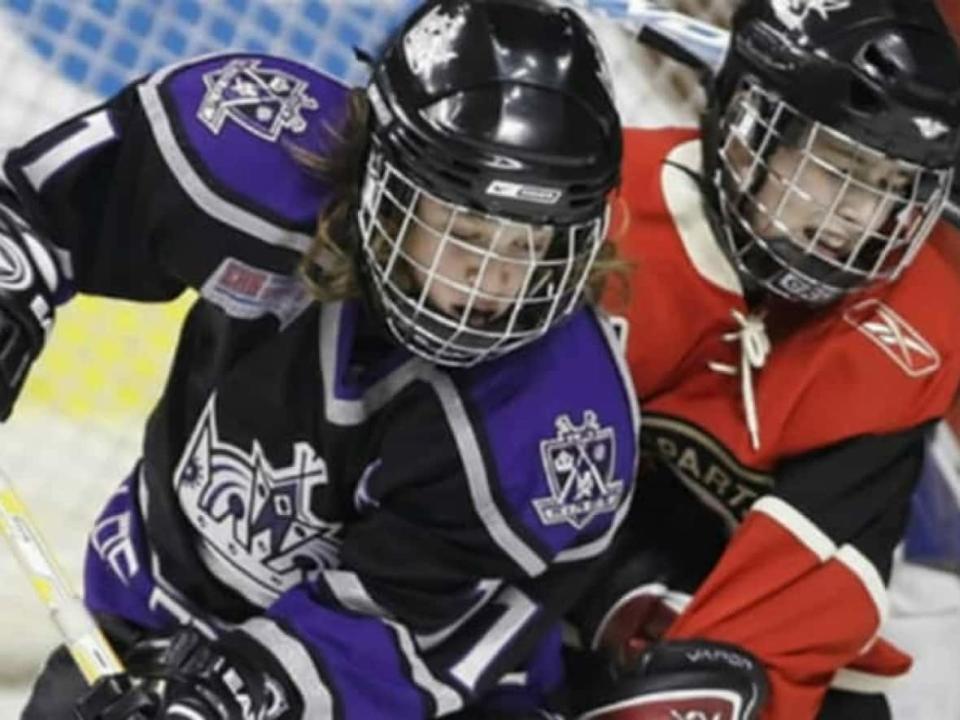Body-checking experience does not protect against concussions and injuries, says U of C study

A study by the University of Calgary's Sport Injury Prevention Research Centre says despite what may be widely believed — that more body checking experience protects players from injuries and concussions — it discovered the opposite to be true.
The three-year research project found 15- to 17-year-old hockey players with three or more years of body checking experience had more than double the injuries and concussions than those with two years or less experience.
"This is just further evidence in support of removing body checking in youth ice hockey to help prevent injuries," said Paul Eliason, a post-doctoral fellow in the Sport Injury Prevention Research Centre.
The U of C study was designed in partnership with Hockey Canada, Hockey Alberta and Hockey Calgary.
A spokesperson with Hockey Calgary says the organization wanted to know whether its earlier decision to remove hitting in the younger, Under-13 age group left players at greater risk of injury when they moved up and started body checking.
"It's been a question that's been asked all the time: by not checking at younger ages, do you not learn it?" said Kevin Kobelka, executive director of Hockey Calgary.
"The studies show that we have made the right decision and kids can learn to body check at older levels."
Study breakdown
The study was conducted between 2015-16 and 2017-18. It included 941 U-18 minor hockey players from body checking divisions in Calgary, Airdrie and Edmonton.
It compared players with three or more years of body checking experience with players who had two or less years of hitting experience.
And it looked at the rates of all types of injuries, injuries that resulted in more than seven days off the ice, and concussions.
In the end, it found players who had more checking experience were injured or concussed more than 2½ times the rate of the less experienced players. And the most common injury was a concussion — regardless of experience — making up more than a third of the injuries.
Researchers also broke down the data by position played, weight, age and level of hockey played.
They didn't find any notable difference in injuries or concussions based on weight, or player position (i.e., forward, defence or goalie).
But it did find lesser skilled players were injured nearly 1½ times more often than the better skilled, elite players who represented the top 20 per cent.
And among the 15-year-olds, the only age group they took a deeper dive on, they again found those with more hitting experience had greater injuries.
"The take home still needs to be that really we're just showing here that more experience isn't protective, which is what the belief is in the hockey community," said Eliason.

Speed and skill to blame?
The study recommends further research to understand the role that behaviours such as aggression, or factors such as speed and skill play.
"Speeds of play and and skill level within within those age categories — we couldn't capture that … and that could be putting them at a higher risk of injury," said Eliason.
George Conroy has been running checking clinics in the Calgary area for 16 years.
He believes those with more body experience are getting injured because they're likely more aggressive and capable of inflicting harm in a game.
And, he says, the range of skill in the lower tiered teams is often greater than in the higher tiered teams, leaving some players in those lower tiers more vulnerable to injuries.
"And so now there are wolves among sheep which can take full advantage of that," said Conroy.
But Conroy says one way to help reduce injuries is to spend more time teaching and practising proper checking — a skill he believes is as important as shooting and stickhandling to game play.
"I've seen minor hockey associations give a two-hour course. It worries me. It's not preparing anybody for hit hockey. It's an enormous skill with enormous downside that you need to prepare for, you need to practice for, you need to train for," said Conroy.
No changes coming
Kobelka says Hockey Calgary has no plans to modify its program based on this latest study.
He says they believe they have a good mix right now.
Checking starts at the U-15 level. But for those who don't want to check, there is a non-checking option, too.
"We've gone to the level that we want to go at this point in time.
"We still have it at our elite levels in our top tiers within our program. I think the customers are looking for that. And the players, to continue to develop to go on to higher levels, need that," said Kobelka.

 Yahoo Sports
Yahoo Sports 